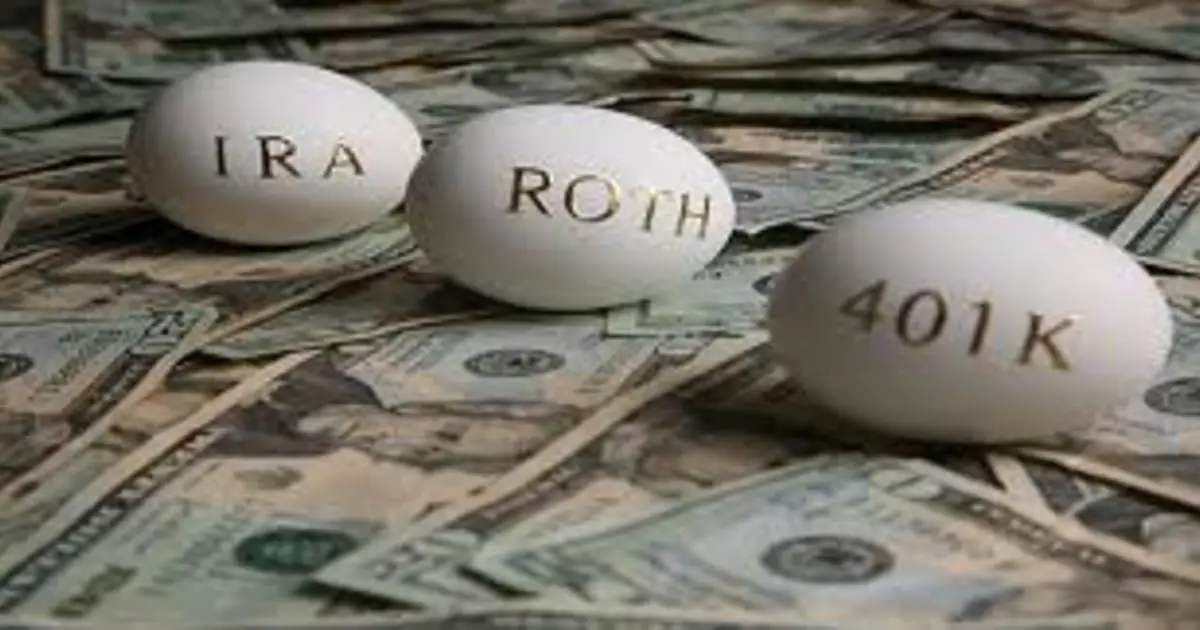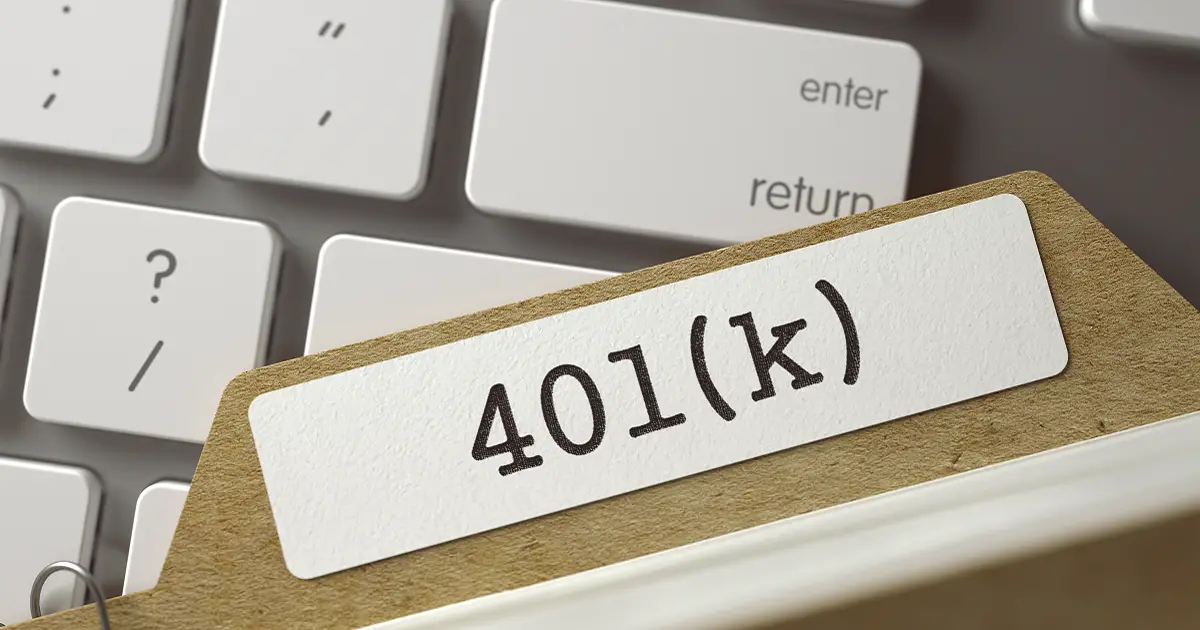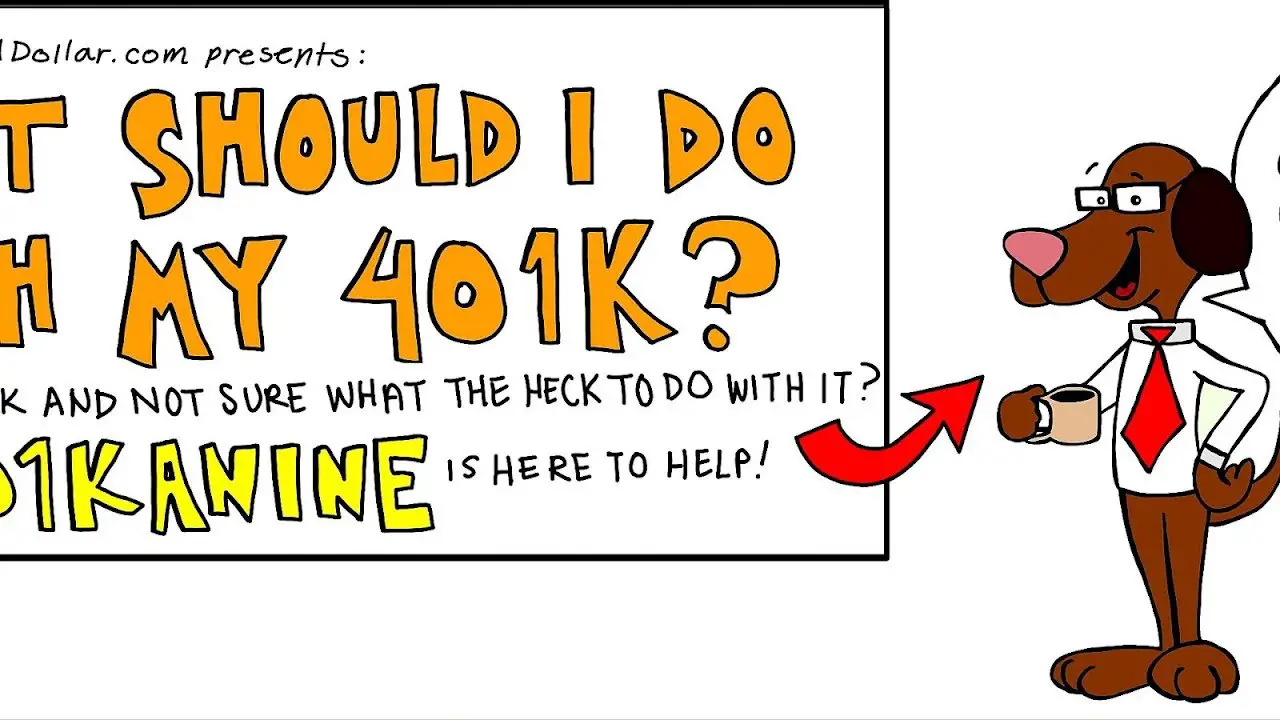Contact Your Former Employer
The first place you should look is your prior employer. Contact their human resources department. There, they should have all of the information as to the whereabouts of the 401 account you had with them.
They should send you the proper paperwork and be able to facilitate the transfer of your funds to whatever account you choose.
If they are unable to locate any information on your account, they should be able to provide you the contact information of the administrator who handled your 401 on their behalf.
Let the administrator know your situation, and just like the HR department, should be able to assist you in moving your money properly.
Look Through Unclaimed Property Databases
You can also search the National Registry of Unclaimed Retirement Benefits Opens in new window to find plans under your name.
Once you find one account, you can potentially spot a few more, as theres a possibility you have multiple plans hosted by the same company. The other accounts should come up as you log into the management companys website.
Fees To Consider Before You Roll Over A :
Youll want to pay close attention to the fees in your old employers account , as well as the fees in your new employers 401 or any IRAs you may be considering.
Many savers dont realize this, but 401s have a variety of fees associated with them, from the individual funds youve invested in to administrative fees from the provider itself theyre just usually quietly taken out of the account over time. You dont have much control over the investment options your employer offers in its 401, but you do typically have the option to pick certain funds, so be sure to look for the lower-cost options.
If youre looking to roll over your 401 into a traditional or Roth IRA, youll have to do more shopping to research how the fee structures will work for different types of investments and account providers. There are a few broad types of fees in an IRA you should look for.
First up: maintenance fees, which can be charged as a percentage of your assets or a flat annual fee. Many brokerages no longer charge this fee, especially for passively managed funds.
Then theres the investment fees, known as the expense ratio, for the underlying mutual funds and exchange-traded funds in your IRA. For these, look for a fee well below 1%.
Finally, when looking at fees related to investing, Meadows recommends avoiding IRAs that charge transaction fees, which are applied when you sell funds, or load fees, which are charged when you make deposits into your account.
Read Also: How Do You Max Out Your 401k
Us Department Of Labor
Even if your former employer abandoned its retirement plan, your money isnt lost forever. The U.S. Department of Labor maintains records for plans that have been abandoned or are in the process of being terminated. Search their database to find the Qualified Termination Administrator responsible for directing the shutdown of the plan.
Use Resources To Discover Unclaimed Assets

Once you use these resources to locate your funds, you can use the following resources to get access to your unclaimed assets.
Don’t Miss: Should You Move Your 401k To An Ira
The Forgotten : 5 Ways To Find Out If You Have A Lost Retirement Plan
Americans hold nearly a dozen jobs by the time theyre 50. Some retirement benefits can get lost along the way.
NEW YORK Americans hold an average of 11 jobs by the time they are 46, according to a 2012 study of the youngest Baby Boomers. Many reports say Millennials are on track to raise that average even higher. Its not uncommon for exiting workers to leave the scraps of their company-sponsored retirement plan behind, believing theyll think about that later.
Now, years have passed and it occurs to you: what if those scraps have grown to be something a bit more than just spare change? A few bucks here and there combined with some market growth over the years and it may all add up to a nice addition to your now even-more-serious effort to save for retirement.
How do you find a forgotten 401?
Contact former employers
Youve tried Googling the company, right? Of course.
And its a good bet you cant find an old statement or check stub with any information that would be the first place to look. Over time, many of us toss out that information, thinking meager leftover retirement savings statements arent worth the paper theyre printed on.
In that case, your next move would be to call the HR department for your former employer. Have your Social Security number handy and try to remember the specific period of your employment.
Seek out former co-workers
Search the government database
Option : Cash Out Your Old 401
Another option is cashing out your 401, which does exactly what you would expect provides cash. But there are many implications to consider. The cash you withdraw is considered income, and you may incur local, state and federal taxes by doing so. You will lose the benefit of giving your accounts investments time to grow, and you may need to work longer to make up the difference. Whats more, if you leave your employer prior to the year you turn 55 and are younger than 59 ½, you will be required to pay a 10% early withdrawal penalty on top of any taxes on the money.
Recommended Reading: What Employees Can Be Excluded From A 401k Plan
Contact Your Old Employer
Your first step should be to contact your former employer. The human resources department should have a record of your account. If your account was rolled over to an IRA for your benefit, your former employer should be able to give you information about the institution holding the IRA funds. If your account is still in the companys retirement plan, your former employer can provide you with distribution forms to receive your money.
Transfer Your Assets To Your New Employers Plan
If your new employer provides you with access to a retirement plan, then you may be able to transfer your retirement assets into your new employers plan. Having your retirement plan accounts in one location may make them easier to manage and allow you to maintain the tax-deferred status.
There are a few things to consider when evaluating this option.
First, ask your new employer whether their plan allows you to transfer your retirement assets from your former employers plan and if there is a waiting period before enrollment in the new retirement plan is allowed.
Second, review the new plans investment options and determine whether they are better than your previous plan. It is important to keep your money where it has the best growth potential.
Third, determine when you can access your savings in the new employers plan without incurring penalties.
Don’t Miss: How To Find Out If I Have An Old 401k
Keep Tabs On The Old 401
If you decide to leave an account with a former employer, keep up with both the account and the company. People change jobs a lot more than they used to, says Peggy Cabaniss, retired co-founder of HC Financial Advisors in Lafayette, California. So its easy to have this string of accounts out there in never-never land.
Cabaniss recalls one client who left an account behind after a job change. Fifteen years later, the company had gone bankrupt. While the account was protected and the money still intact, getting the required company officials and fund custodians to sign off on moving it was a protracted paperwork nightmare, she says.
When people leave this stuff behind, the biggest problem is that its not consolidated or watched, says Cabaniss.
If you do leave an account with a former employer, keep reading your statements, keep up with the paperwork related to your account, keep an eye on the companys performance and be sure to keep your address current with the 401 plan sponsor.
Keeping on top of how the plan is performing is very important as you may later decide to do something different with your hard-earned money.
Indirect Rollovers Can Be Complicated To Manage
With an indirect rollover, you receive a check for the balance of your account that is made payable to you. That might sound good, but as a result, you are now responsible for getting it to the right place. You have 60 days to complete the rollover process of moving these assets to your new employer’s plan or an IRA.
If you dont complete the rollover within this 60-day window, you will owe income taxes on the amount you failed to roll over. If you’re under 59 1/2, you will also face a 10% penalty tax. Indirect rollovers can be made once a year.
Your old employer is required to withhold 20% from your distribution for federal income tax purposes. To avoid being taxed and penalized on this 20%, you must be able to get enough money from other sources to cover this amount and include it with your rollover contribution.
Then, youll have to wait until the following year, when you can file your income tax return to actually get the withheld amount back.
Suppose the 401 or 403 from your prior employer has a balance of $100,000. If you decide to take a full distribution from that account, your prior employer must withhold 20%. That means they keep $20,000 and send you a check for the remaining $80,000.
Even if you have an extra $20,000 on hand, you still must wait until you file your income tax return to get the withheld $20,000 returnedor a portion of it, depending on what other taxes you owe and any other amounts withheld.
Also Check: Is There A Limit On Employer 401k Match
What Happens To Old 401s
401 administrators have different procedures for what to do with left behind accounts. Depending on the amount, they could be distributed directly to you, transferred to an IRA on your behalf, or sent to a separate holding account until you claim them.
Unwilling to bear the burden of maintaining vast amounts of accounts from former employees, 401 plans prefer to unload them any way possible. This can make it challenging to find your old 401s.
What To Do When You Find An Old 401

Once youve reconnected with your old 401, its time to decide what to do with it:
- Leave it with your old employer. If you contributed at least $5,000 to your old 401, you might consider leaving it where it is. But this may only be worthwhile if the account has competitive fees or offers access to unique investments. Otherwise, itll be yet another account to keep track of come retirement, and you may be better off rolling it over.
- New 401 rollover. Has your new employer offered you a 401? Consider consolidating your retirement funds by rolling your old retirement account into a new 401.
- IRA rollover. If you dont have a new 401 to move your old retirement funds into, consider rolling over into an individual retirement account. That way, your funds retain their tax-advantaged status.
- Cash it out. Consider this a last resort because cashing out a 401 ahead of schedule can result in major penalties.
- If youre older than 59 ½, you can access funds without penalty.
- If youre under 59 ½, withdrawals are subject to a 10% tax penalty and other fees.
Recommended Reading: Can I Move My 401k To A Cd
What Is A 401 Account
A 401 plan, named for the section of tax code that governs it, is a retirement plan sponsored by an employer, allowing employees to save a portion of their paycheck for retirement.
The advantage to employees of saving with a 401 plan is they are able to save funds they have earned, before taxes are deducted from a paycheck.
Many employers offer a company match meaning whatever the employee contributes, the company matches.
Although 401 plans were originally born as a supplement to pension plans, they are now often the sole retirement plans offered at companies.
Roll Over 401 Into An Ira
For those who would prefer not to rely on their new companys 401 plan’s investment offerings, rolling over a 401 to an IRA is another option. Again, rollovers can be direct, direct trustee-to-trustee transfers, or indirect, with the distribution paid to the account owner. But either way, once you start the process, it has to happen within 60 days.
Ford generally favors rolling the money over into the new companys 401 plan, though: For most investors, the 401 plan is simpler because the plan is already set up for you safer because the federal government monitors 401 plans carefully less expensive, because costs are spread over many plan participants and provides better returns, because plan investments are typically reviewed for their performance by an investment advisor and a company 401 investment committee.
Don’t Miss: Can You Cash Out 401k To Buy A House
Find 401s With Your Social Security Number
All your 401s are linkedin to your social security number when you enrolled. Theoretically you should be able to find all your 401s with your SSN. However, in practice it’s pretty hard for one to do so. As far as we know, Beagle is the only company that simplifies this process and can conduct a comprehensive 401 search using your SSN. Once they find your 401s, they also help you with the tedious rollover process.
Find The Contact Information And Address Of Your Account Holder
What happens if the company is no longer in business? Well, your retirement account should still be held somewhere. Its your money, after all.
You can go to the Abandoned Plan database Opens in new window, hosted by the Department of Labor. There you can search the company, and you will be provided with information on how to locate the lost plan.
Read Also: How To Find If You Have A 401k
Leverage The National Registry
The National Registry, run by Pen Check, a retirement plan distribution firm, is a nationwide, secure database listing of retirement plan account balances that have been left unclaimed by former participants of retirement plans.
The site offers an easy, free-of-charge way to locate lost or forgotten employee retirement accounts. You can conduct as many searches as you want, using just your Social Security number. The site is safe, encrypting any information you input on a secure server.
The Takeaway On Finding Lost 401 Money
If you suspect that you’ve left a 401 behind somewhere and don’t attempt to locate it, you’re risking losing the plan — and the money — for good.
But if you don’t respond, a company holding an old 401 account has no obligation to pursue the issue further, and eventually will relinquish your old account to the state, and all of the funds held, as well.
Don’t let that happen to you. Use the tips listed above to make every effort to find your lost 401 account and get the money back for yourself, and don’t let “free” retirement slip out of your control.
You May Like: Can I Move 401k To Roth Ira
Search The Abandoned Plan Database
If you cant find your lost money by contacting your old employer, searching the National Registry of Unclaimed Retirement Benefits, or the FreeERISA website, you have one last place to check, the Abandoned Plan Database offered by the U.S. Department of Labor.
Searching is simple, you can search their database by Plan Name or Employer name, and locate the Qualified Termination Administrator responsible for directing the shutdown of the plan.
Discover Where Your Funds Are Transferred

If your former employer does not have your old 401, you can search on the Department of Labors abandoned plan database. You will be able to search for your plan using the information you already have, including your name, your employers name and more. If you had a traditional pension plan and it no longer exists, you can search the U.S. Pension Guaranty Corp. database to find your unclaimed pension.
Finally, you may want to search the National Registry of Unclaimed Retirement Benefits. This service is available nationwide and has records of account balances unclaimed by former retirement plan participants.
Recommended Reading: Where Is My 401k Account
Taking The Cash Distribution May Cost You
Avoiding cash distributions can save you from taxes and penalties, because any amount you fail to roll over will be treated as a taxable distribution. As a result, it would also be subject to the 10% penalty if you are under age 59 1/2.
Since the taxable portion of a distribution will be added to any other taxable income you have during the year, you could move into a higher tax bracket.
Using the previous example, if a single taxpayer with $50,000 of taxable income were to decide not to roll over any portion of the $100,000 distribution, they would report $150,000 of taxable income for the year. That would put them in a higher tax bracket. They also would have to report $10,000 in additional penalty tax, if they were under the age of 59 1/2.
Only use cash distributions as a last resort. That means extreme cases of financial hardship. These hardships may include facing foreclosure, eviction, or repossession. If you have to go this route, only take out funds needed to cover the hardship, plus any taxes and penalties you will owe.
The CARES Act, enacted on March 27, 2020, provided some relief for those who need to make withdrawals from a retirement plan. It lifted penalties for withdrawals made through December 2020 and provides three years to pay back any early withdrawals.
